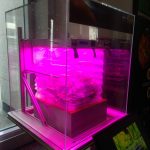#40: Pandemic Prepping: Protecting Home Habitats and Driving Economy.
Covid-19 sent the world into medical and economic tailspins. We’ve been on lockdown in central PA for two months. Some of the shut down is lifting this week, but the danger is not over.
During this time, EcoIslands has had time to evaluate home habitats and communities responses to the pandemic. The lessons learned apply to large scale crisis and chronic health impediments alike.
Never weathering a pandemic, it took our team time to vet questions and answers. How do we mitigate and protect business and our mine sites, our homes, our communities, and the world at large from further outbreaks and crisis? Lack labor or parts, modern infrastructure stops.
A Lesson: A pandemic has made us aware of our consumption habits and supply chains. Our distance.
The very thing we rely on to drive the economy, consumption, has plummeted as demand evaporates for most products and goods that aren’t Needs. Crude traded at negatives, first time ever. Meat packaging plants are buttoning up temporarily and some products are gone from shelves (which is almost unheard of in the contiguous US). I learned way more about TP supply and demand curves from Mom than I ever expected.
The Wants industries are taking the hardest hit while other businesses, like Amazon and delivery models, are thriving. Fortunes are being made and lost on social distance and work at home platforms. We must quickly adapt to take advantage of the lessons and opportunities this pandemic threw at our feet.
What does pandemic prepping look like and how do we apply it to our home habitats? How do we increase food, energy, and health security when this, or worse, happens?
Pandemic Prepping requires permaculture, social distancing, supply chain decentralization, home sustainable construction, and simple routines. It’s big because it’s not Big.
The world went through this before, just different. Y2k was 20 years ago. I was heading back to Ft Benning for AIT when dad sent me a letter asking what I thought and to draft a to-do/buy list. I did. Got through training a bit different and went home to station bc I was PA National Guard. We were prepared and fortunately nothing happened. 9/11 was a breath behind.
Things are happening fast. Threats are different, endemic and irrespective of nation, bias, or development.
To be individually and nationally prepared, we must encourage personal and Hab self reliance to increase resilience. Two to four hundred square feet of open sun and managed garden can significantly offset a families nutrients needs. 80 years ago it was Victory Gardens. Now they are Habs, a familiar term in the space and Mars communities.
For a walk through a pre-electricity farm, see our Vlog #34: UnderHill Permaculture, a walkabout an old American Farm.
Farms are still the best modern case scenario of a pandemic resistant habitat. Dense populations must design personal and institutional infrastructure to be practically independent and based on Hab mediated cycles (water/wastewater, air circulation, the seasons, solar energy, small supplemental farm plots in and outside…)
The goal is to sustain food, air, water, health, and energy under threat and multiplier with small scale infrastructure.
No new housing complex should be built without its own systems to partially support its inhabitants. The increased cost to plumbing, ducts, and waste water treatment are returned on external utility and energy savings.
With advanced bioremediation and a concerted push to decentralize, the construction boom and increased sustainability will pay dividends into perpetuity.
To get there, here are steps we can take to secure and prepare our habs, homes, and communities.
Level 1, for the individual, DIY’er, direct cost, $1-5K:
A handy homeowner with 100 square feet of well insulated and sealed greenhouse ( 9′ / 3M tall) attached directly to the house can harvest condensing water for drinking (UV sterilizer to purify), extra heat during the winter, solar hot water on most days, grow food and fish, clean and sterilize the air with UV and natural processes, and cycle (stale air) CO2/O2 between home and greenhouse (to fresh air).
The investment in a multi-purpose greenhouse is your Return on Investment, or ROI. Home and apartment owners are encouraged to invest in simple upgrades with reasonable ROI. Writ large, regional and national construction get a massive economic boost. We still consume to drive the economy on the short term. The back end is self reliance, paid forward. When this happens again, be it pandemic or war, refugee or climate crisis, we weather the storm with less disruption to the overall economy and the people its serves.
Level 2, for the individual, direct cost, $10-50K+: PermaCyclers BECLSS (Biological Environmental Control and Life Support System) + Solar Panels for home.
Increase the greenhouse size and volume to produce more food, water, heat, and atmospheric cycling.
Add electricity, chickens and wireless automation and you’ll only need to leave the home for a walk in the woods and going to the mail box. Distance. Simple. Fight Covid by not needing to go out more than necessary. The automation can be hooked into security and monitoring systems, ala ADT or the like.
Grey wastewater from sinks and showers (using biodegradable soap) is piped to the hab’s aquaponic tanks with a pretreatment wetland.
Food waste is sent to an in-sink grinder and goes to the aquaponics tanks to feed fish and cycle organic carbon to CO2 for further plant growth in the greenhouse.
Or, food waste and black water can go directly to a new Mk5 series PermaCyler for methane and nutrient distillation and capture.
Custom fit cisterns / aquaponic tanks (which we build and install) are integrated into the structure of the greenhouse to hold more water and balance day/night heat flux, rounding off highs and lows.
Venting is adapted to more efficiently cycle hot and cold, stale and fresh air between the house and greenhouse. Humidity from passive and active condensers can be captured for drinking/wash water.
Time and money should absolutely be spent on further sealing the home to prevent outside air from getting in without first going through UV and dust filters. Biosphere 2 had enormous air pressure compensations “lungs” which aren’t practical from private homes. Your Hab is static, so must take pressure changes into account.
Add solar panels. Replace worn out appliances with efficient modern units.
With these adaptations, the Hab has been adapted with a natural attenuating life support system. You don’t have to go out near as much, and the local and national economy is still thriving from a home construction boom that will last for years to come.
Level 3, for farmer, developer, municipality, or multi-unit apartment owner and up: Small housing developments or apartment building scale. 15+ residents. Low Impact Storm and Waste Waster Development and Decentralization.
Beyond one home doing all it can in Level 2, it must still get rid of human and trash waste. Here is where local water and waste water infrastructure can be decentralized using modern bioremediation and benefaction technologies.
A private residence can be taken to level 3, but we’re talking 100K+ for all the upgrades, and that’s generally not a practical retrofit for the average homeowner unless they’re starting the build from scratch. Hab design considerations from the beginning are the most cost effective.
I’m not covering plastic, glass, and metal recycling here. It should be encouraged at a local business level to increase. Local products should be derived from, and sold back to the community to shorten supply chains and provide local jobs.
Instead of a home methane digester and waste processor’s cost being born by one homeowner, a small group of homes can deliver waste first to a larger, more cost effective PermaCycler. The cycler distills and stores (where feasible) the waste to its elemental parts (N, S, Se, CO2…). The nutrient salts continue through the existing infrastructure to waste treatment plants.
When the PermaCyclers are deployed as methane digesters, energy is derived from the process and added to the local grid through methane fuel cells, not combustion.
Importantly, these development steps save money and put emphasis on replacing the worn out with efficient, self-sufficient infrastructure.
Level 4: not necessary, just replicate Level 3. Decentralized bioremediation means you don’t have to build beyond a practical scale. Replicate efficient scales till a total population is sustainable for their resources, climate and density. The best scaled benefits come from populations in the thousands, not millions. Build fast, build small, build local.
The simple application of sustainable technologies will increase food, water, air, health, and energy security. The construction boom can provide millions of good paying jobs, and we’ll be building more stable societies capable of surviving crisis.
Call to Action: Want to design and build your home habitats to save you money and protect our shared communities and environments? Give us a call at 814-937-9115 or email info@ecoislandsllc.com for a free consultation. Science related Lectures and Presentations are also available for students of all ages.





